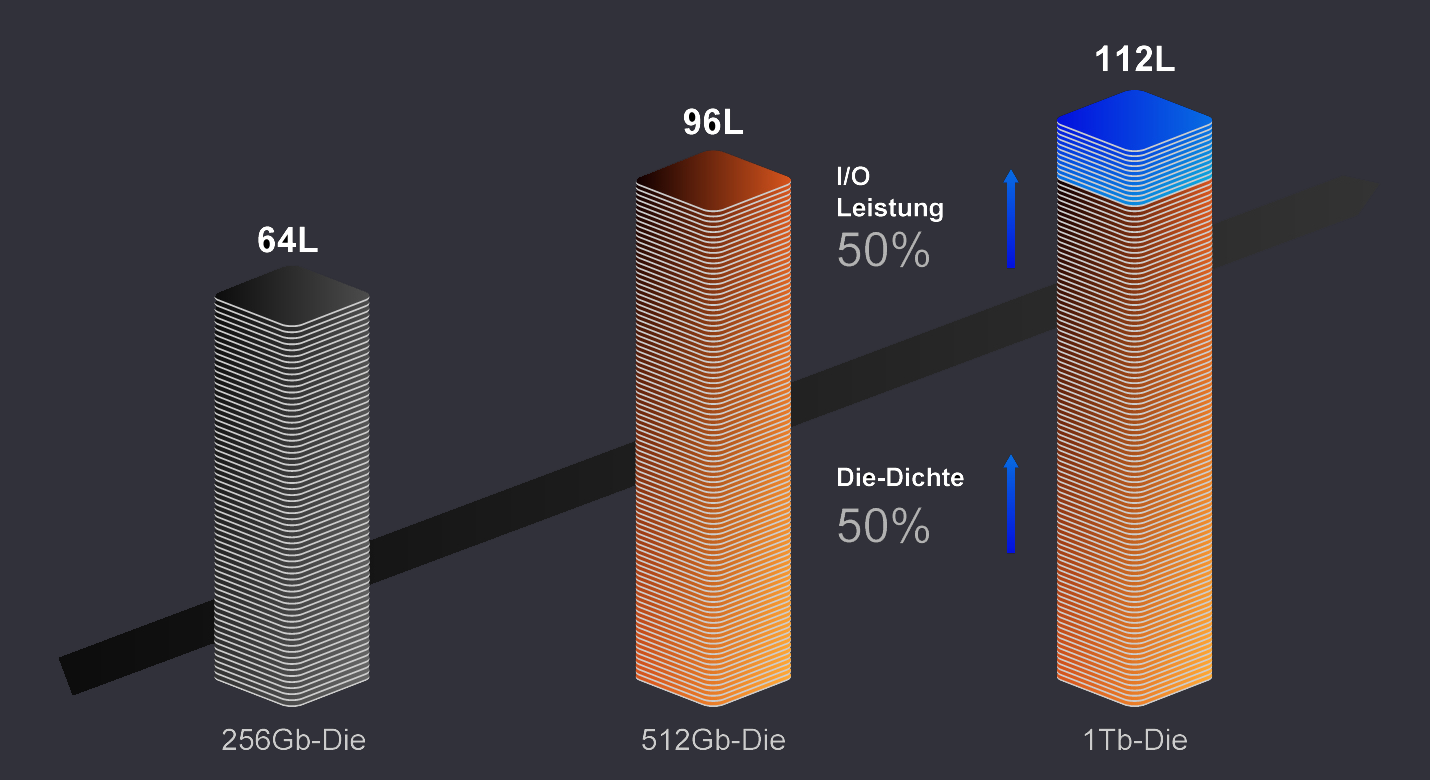Lots of Types of NAND

Most NAND flash memory on the market today stores two, three, or four bits of data per cell. These types of flash are referred to as Multi-Level Cell (MLC), Triple-Level Cell (TLC), and Quad-Level Cell (QLC), respectively. Among these, MLC offers the best data retention, endurance, and reliability \u2014 but also comes with the highest cost, followed by TLC and QLC.
SLC (Single-Level Cell) is considered the most error-tolerant flash solution. While a TLC cell stores three bits of data (e.g., 010, 101, 110, or 111), an SLC cell holds only a single bit (0 or 1). The likelihood of data errors is minimized when each cell represents just one bit of data. However, to store the same amount of data using SLC NAND, three times as many cells are required compared to TLC, for example.
Endurance and How It's Measured
The lifespan of NAND flash is measured in terms of P/E cycles \u2014 that is, the number of Program/Erase operations the flash memory can endure before its oxide layers degrade to the point where they can no longer reliably hold the amount of electrons needed to represent data accurately.

P/E cycle limits can be influenced by various software and hardware techniques. For example, TLC flash typically supports anywhere from 1,000 to 3,000 P/E cycles, or even more under optimal conditions.
| NAND-Type | SLC | MLC | 112-Layer 3D TLC |
96-Layer 3D TLC |
64-Layer 3D TLC |
QLC |
|---|---|---|---|---|---|---|
| Bit/Cell | 1 | 2 | 3 | 3 | 3 | 4 |
| Die Density | * | ** | **** | *** | *** | *** |
| Performance | **** | *** | ** | * | * | * |
| Endurance (P/E-cycles) | 50K | 3K | 3K | 3K | 1K | 1K |
| Reliability (Data retention) | **** | ** | ** | ** | * | * |
| Price/Gb | $$$$ | $$$$ | $ | $$ | $$$ | $ |
| Fokus | Endurance More Relevant Than Cost | Industrial / High-Performance Applications | Industrial or High-End Consumer Level | Middle Class Consumer Level | Consumer Level | Entry Level Consumer |
Tags: #hardware #nand




